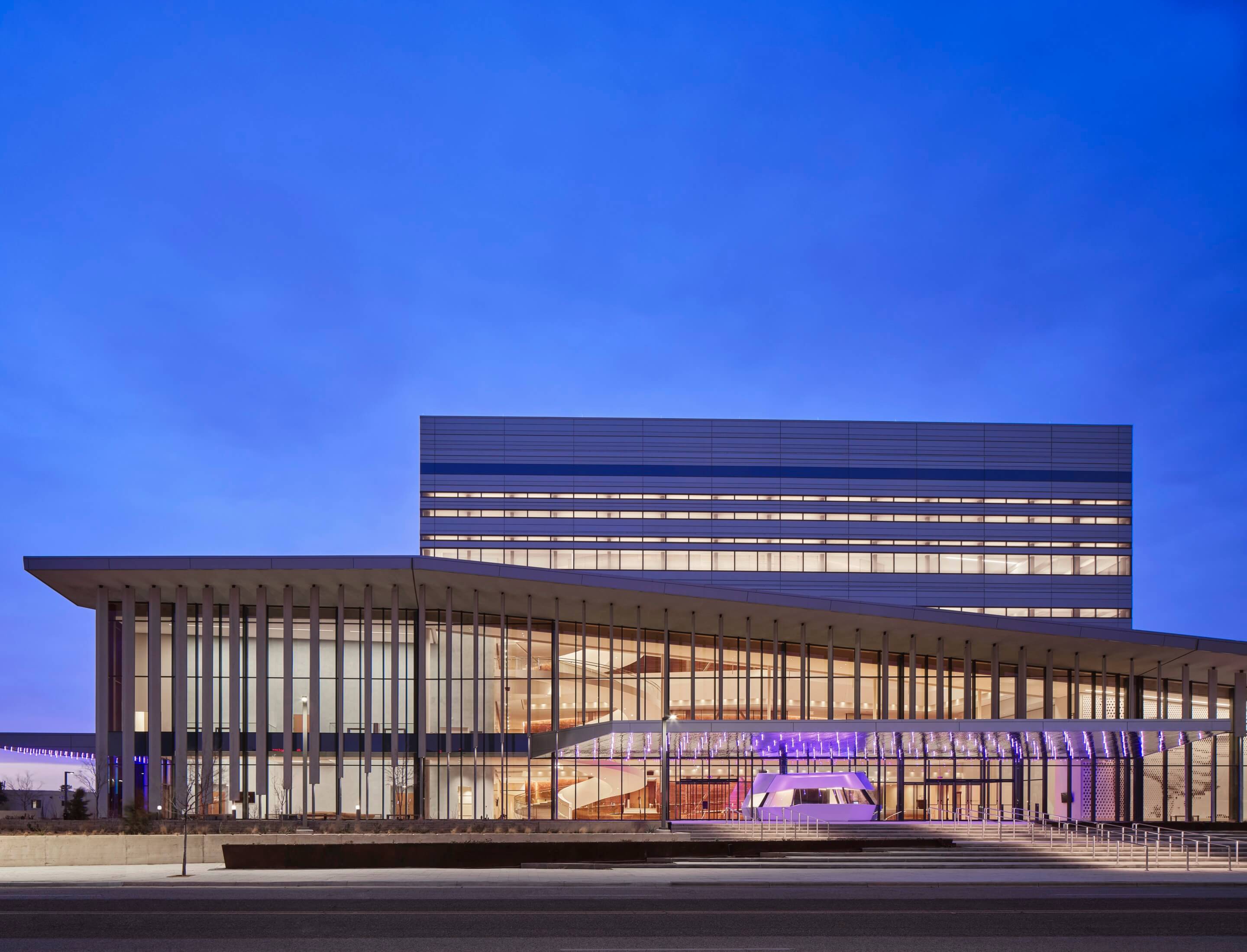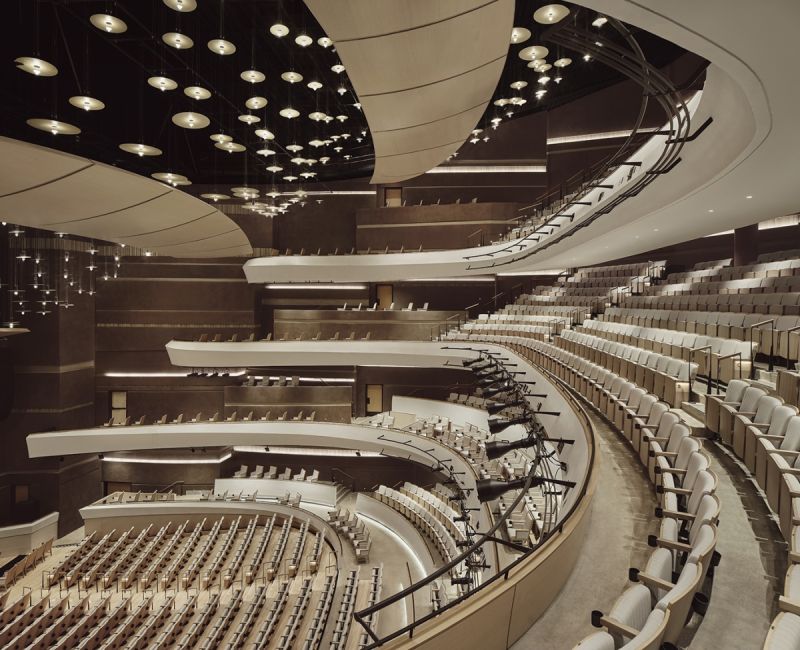

Typically, such theaters are constructed with reinforced concrete. The second challenge of bringing this performance hall to life involved the use of structural steel for the balconies in the main theater. Can you tell us about the second challenge? Of course, the final product is a beautiful stair adorning the lobby of this special center. Wow, the feature stair required quite a few special considerations. This way, we were able to ensure that the stair would not be subjected to excessive vibration from performance center patrons ascending and descending the stair. An effective means for providing additional damping for a structural mode of vibration whose motion is deemed excessive is the addition of a tuned mass damper (TMD) to the base structure. Through our analysis it was found that supplementary damping was required to meet the vibration limits. Finally, rapidly descending groups can cause significant amplification compared to just one person. Harmonic forces due to descents are high compared to most other forces from human activity, and stair damping and mass are often also very low. This combination of low natural frequency and high step frequency means almost all slender stairs are excitable by the second or third harmonic of the walking force. People can descend stairs at up to a 4-Hz step frequency without much effort. The natural frequency of the stair segments between Level 2 and 3 and Level 3 and 4 was found to be approximately 2Hz.
#Buddy holly hall full#
A finite element model of the stair, including all supporting framing, was analyzed to capture its full behaviour. The long spans, slender profile, and low mass, in conjunction with a low damping ratio, resulted in a low-frequency system that was particularly vulnerable to vibrations from human activity. The feature stair also presented vibration challenges. A temporary support tree was used to support the stair during erection as it was installed in five pieces and required significant field welding between the connections. The stair was temporarily erected in the shop in two parts to test the fit and complete the fabrication process prior to erection on site.

The fabrication sequence involved bending the HSS chords and then welding the plate on afterwards.

Given the large section sizes and tight radii required, only two facilities in the United States had the ability to roll these sections, which also came with a six-month lead time. To achieve the desired aesthetic for the stair, the HSS had to be bent in two directions to create the central spine and outer ring. All told, the stair represents approximately 145 tons of steel. The treads are formed from a steel plate and support polished concrete treads. At the exterior edge of the stair an HSS member connects all the risers. The stair is constructed from Hollow Structural Sections (HSS) and steel plates.

Structural steel framing for the feature stair – under construction.Ĭhristine DeVitt Main Lobby, Buddy Holly Hall. Tom: The dramatic helical staircase in the Christine DeVitt Main Lobby is over 17 meters (56 feet) tall across three stories and features a central spine that supports cantilevering stair treads that vary in length between 2.4 meters (8 feet) and 4.2 meters (14 feet). Let’s start with the feature stair in the lobby. A few of the challenges we solved during the design of Buddy Holly Hall included: the feature stair in the main lobby the balconies in the main theater and the main entrance elevation, which includes a dramatic set-back in the façade at the sloping roof line. This was a truly unique, community-building project that required uncompromising performance. Can you tell us about some of the challenges of this beautiful performance center? Thanks so much for sitting down with us, Tom. The facility is acoustically flexible to accommodate opera, symphonic and rock music, and other performances, such as Broadway shows and the ballet, as well as educational activities, banquets, and community events.Įntuitive served as the Structural Engineering Consultant for the above-grade work on the Helen DeVitt Jones Main Theater, Christine DeVitt Main Lobby, including the feature stair, and the front entrance canopy. It includes a 2,300-seat main theater, a 425-seat studio theater, a multipurpose event room, ballet studios, and a bistro café. The Buddy Holly Hall of Performing Arts and Sciences is a world-class, multipurpose cultural venue that recently opened its doors (for some limited events). Recently we sat down with Tom Greenough, Associate, to talk about a unique project, the Buddy Holly Hall of Performing Arts and Sciences in Lubbock, Texas.


 0 kommentar(er)
0 kommentar(er)
